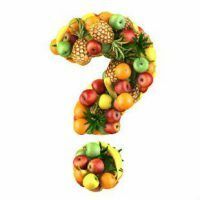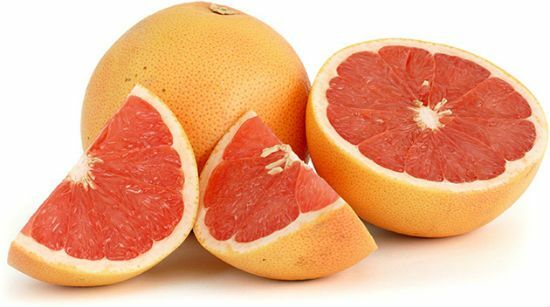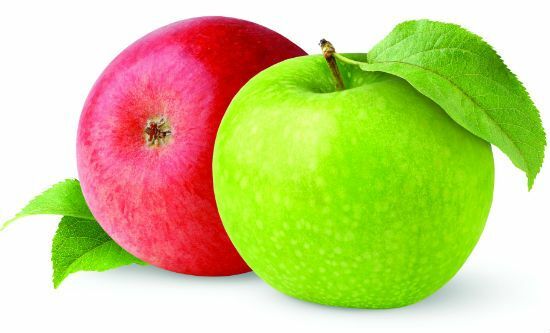
Diabetes is considered a fairly serious disease, which requires a special diet with a minimum amount of carbohydrate food and constant monitoring of blood sugar. However, this is not an excuse to give up most of the products. It is only necessary to correctly choose their choice. To do this, take into account the glycemic index of each product.
- Usage rules
- Which fruits are allowed
- The most useful
- Prohibited fruit
Usage rules
The first thing to begin with is the study of the glycemic index of products. This value shows how quickly carbohydrates enter the body, converted into glucose. People with diabetes can eat only foods that are low - up to 55%, or the average glycemic index - up to 70%.Products with a high value of this indicator - above 70% should be excluded from their diet.
Making up a menu for a diabetic, it is necessary to pay special attention to the amount of servings. It is believed that one serving should not exceed 100 grams. Large fruits must be divided into several receptions. You need to eat slowly, better to grind the fruit or make mashed potatoes. Small portions during the day will help to avoid jumps in blood sugar levels, rather than a large portion, eaten at one time.
Patients with diabetes mellitus recommend dieters to have a special notepad to control food intake, as well as purchase a table of the glycemic index of products. Thanks to this, you can not only calculate the amount of servings and the amount eaten per day, but also monitor the reaction of the body to certain foods.
to the table of contents ^Which fruits are allowed
Doctors-nutritionists advise choosing diabetics fruits from the category of sour and sweet-sour. The fruits of these varieties have a low glycemic index. Here is the list of recommended fruits and berries for diabetics:
- citrus - grapefruit, lemon, orange;
- apples;
- pears;
- plums;
- cherries;
- grenade;
- peaches;
- kiwi fruit;
- mango;
- berries - gooseberries, currants, sea buckthorn, chokeberry, raspberries, blackberries, cranberries, hawthorn, cranberries.
The products in the list below are only allowed in limited quantities, as they contain less fiber and more glucose and sucrose. Fruits and berries with an average glycemic index:
- pineapple;
- papaya;
- melon;
- watermelon.
These fruits can be consumed by combining them with foods rich in fiber. For example, you can make a fruit salad, or eat such fruits together with legumes that slow the process of converting carbohydrates into sugar.
to contents ^The most useful
This category of fruit is low in glycemic index, containing a large number of minerals and vitamins. Three products are distinguished here.

Grapefruit. Leader in the content of vitamin C, helping in the fight against colds and beriberi. In addition, it contains minerals that prevent the formation of cancer cells. Grapefruit also contains coarse fiber. This fruit is considered not only authorized, but also mandatory for use in diabetics, as it reduces the level of cholesterol and sugar in the blood.

The next fruit in the list is an apple. Apple is famous for its high content of pectin. It is this substance that helps the body to remove harmful substances, purifying the blood. And this, in turn, contributes to the normalization of the sugar level.

Jambul is an exotic fruit that grows on the territory of India. This unusual fetus lowers insulin levels by the ability to normalize and slow down the process of converting starch into glucose. It improves the functioning of the pancreas and is as indispensable in diabetes as the first two representatives.
Prohibited fruit
All fruits allowed for this disease should be consumed only in raw form. Fruits that have undergone any treatment, lose the bulk of their useful properties, and for patients with diabetes are completely harmful. The rate of conversion of carbohydrates into glucose in such fruits exceeds the permissible norm, in comparison with the same products in raw form. But berries and fruits of sour varieties can be consumed in a baked form and in the form of compotes. You can not include in the menu fruit mousses, yoghurts or cocktails containing various additives - sugar, dyes, preservatives, etc.
Separately it is necessary to say about fruit juices. They, as a rule, in the majority contain a huge amount of sugar, which is unacceptable for people with diabetes. In addition, the glycemic index of freshly squeezed juice of any fruit is much more important than its flesh. Frequent consumption of concentrated fruit juices provokes the development of the disease even in previously healthy people, especially children.
The following fruits should be completely excluded from the diabetic menu, as the glucose content in them is too high:
- bananas;
- cherry;
- persimmon;
- figs;
- grapes;
- dates;
- dried fruits.
With diabetes, fruit consumption is of no small importance. Pectin, contained in their shell, helps reduce cholesterol and blood sugar levels. And vitamins and minerals accelerate metabolic processes and activate metabolism. Indispensable and fiber, part of the fruit. It helps to remove harmful accumulations from the intestine and does not allow gaining excess weight. Therefore, fruits with such a disease are a necessary component of the patient's diet. The main thing is the correct approach to their choice and use.
Thank you very much for the interesting site. My grandfather was put in a hospital. And it turned out that he had sugar. Asked doctors what can I bring him? Some said that you can do anything. And some said that nothing can be done. We read on the site that you can. Today they went to the hospital and were allowed to carry all the fruits that are written that you can. Not allowed to carry only peaches. All the rest is allowed. Thank you very much for such a good site! I am very glad that I was able to please my grandfather.

My grandmother has diabetes mellitus, and she has long given up fruit. Now I know that there is a fruit for this disease and it is possible and necessary.